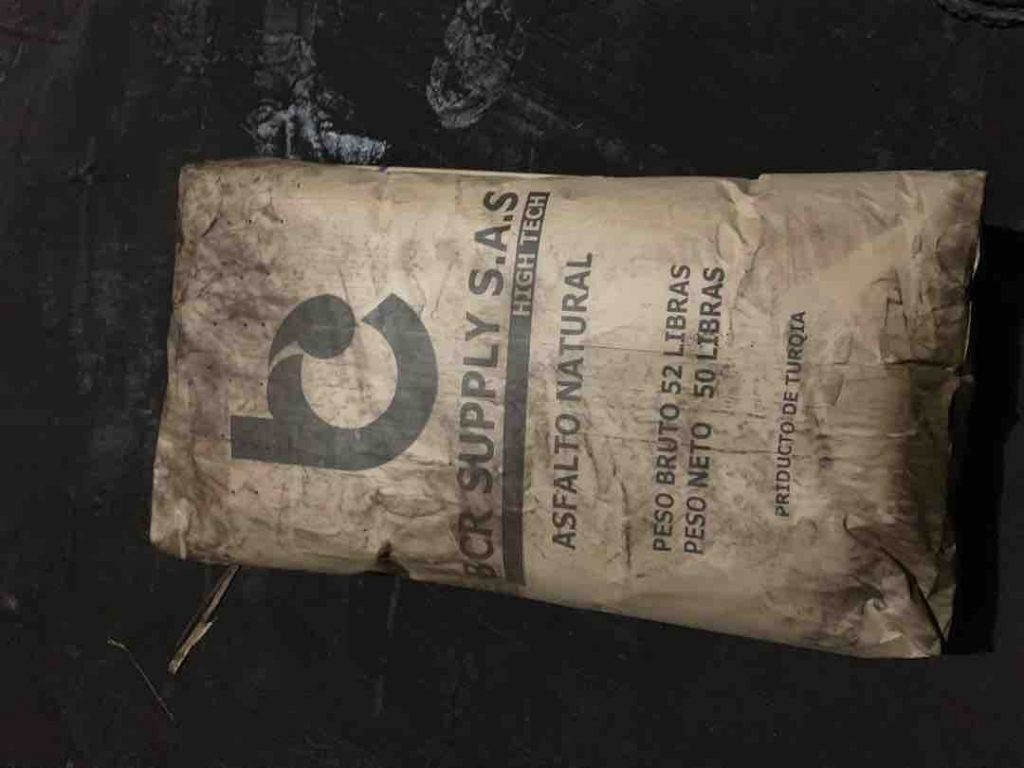
HTHP high temperature high pressure Gilsonite
- Home
- HTHP high temperature high pressure Gilsonite
Rate this page

Gilsonite stocker in Turkey and UAE
HTHP Gilsonite, also known as High-Temperature High-Pressure Gilsonite, is a naturally occurring, unique carbonaceous material extract from natural deposits. Renown for its exceptional properties and versatile applications, HTHP Gilsonite is an invaluable asset in a wide range of industries, including oil and gas, construction, asphalt modification, and more.HTHP Gilsonite compatibility
HTHP Gilsonite is compatible with any type of mud and can be used against circulation loss, along with other materials such as mica, calcium carbonate from pre-measured particles, gilsonite, etc.High softening point asphaltite
The high softening point asphaltite resources, in particular, will afford the Company the access to large and very profitable markets for exports and domestic needs as Colombia tackles its burgeoning need to expand its road infrastructure as well as service other industrial uses.Natural asphalt
Natural asphalt HT residue can be partially removed by common treatments, with hydrochloric acid solution or sodium hypo chlorite. HT Gilsonite is 55% soluble in 15% HCl at 100 Cº (212 ºF).Oil well drilling additive in drilling mud
Outstanding against circulation loss, due to its exceptional particles, smaller than those of common materials but larger than the solids, which contain almost all type of drilling mud.Drilling fluid water base and oil base
The main function of drilling fluids is to remove the rock cuttings generated by the drill bit. They are classifying according to their base components: water (WBM, water base mud) or oil (OBM, oil base mud). Among the main additives we find polymers, densifiers, salts, surfactants and lubricants.Water base mud
The current trend is to design environmentally friendly WBMs that can compete with OBMs in terms of low toxicity, minimal damage to the producing formation, efficiency, and low costs associate with the final disposal of generate cuttings and fluids.Shale drilling by Gilsonite additives
This led to the incorporation of new formulations and materials such as nanometric ones. This type of sedimentary formations with a laminar structure, are made up of consolidated particles the size of clays, have nanopores and low permeability. During shale drilling with WBM, the stability of the well walls must be guaranteed by controlling the inhibition of the clays present and the increase in pore pressure cause by the ingress of fluid into the formation.Formation
For this last purpose, in this work, 12 nm nanosilica was selected, which plugs the shale pores that have an average size of 30 nm. In this way, the aim is to reduce the ingress of fluid into the formation, the pore pressure, the permeability and minimize the rock-fluid interaction.Oil base mud
The rheology of the WBMs design and age with different proportions of nanoparticles was studied, comparing them with the rheological behavior of an OBM to determine the optimal concentration of nanosilica, which was 0.5% w/w. At the same time, following the API 13B1-2 and API 13I standards, fluid inhibition and filtration control tests were carried out.Gilsonite powder types
Offered in three grades: fine grain (original product), medium, and coarse, to permit the selection of the proper size for each specific case. Do not need additives,Compatible with all types of drilling mud and with other materials against circulations loss.Easily mixes and scatters in the mud.HTHP Gilsonite goes easily through most of the mud screens (vibrating mud screens).Differences of Gilsonite origin between Iran, Colombia and American Gilsonite
Iran, Colombia, and the United States are three major producers of Gilsonite, and while there may be some similarities in their Gilsonite deposits, there are also several differences among them. Here are some potential differences between Iranian Gilsonite and Gilsonite from Colombia and the United States.Composition
It is a complex mixture of hydrocarbons, and the specific composition can vary among different locations. While the general composition of Gilsonite is similar worldwide, there may be variations in the ratios of different hydrocarbons and the presence of impurities in Gilsonite from Iran compare to Colombia origin and the United States.Quality and Purity
The quality and purity of Gilsonite can differ between different regions. Factors such as impurity levels, mineral content, and extraction techniques can influence the overall quality of the Gilsonite. Quality standards and market preferences may also vary among the producers.Physical Properties
The physical properties of Gilsonite can differ base on its source. These properties include color, hardness, density, solubility, and softening point. The specific geological conditions, extraction methods, and processing techniques can lead to variations in these properties between Iranian Gilsonite and Colombia and American Gilsonite.Market Availability
The availability and accessibility of Gilsonite in the market can vary between different producers. Transportation costs, logistics, and market dynamics can influence the availability of Gilsonite from Iran, Colombia, and the American in different regions of the world.Analysis and specification of HT Gilsonite

Contact Info
Address:
Turkey office:No.6 of Fahrettin Pasa Sokak , Galip Erdem steet, Ilkbahar Mah. Turan Gunes Ave. Çankaya Ankara
Phone: 00903125147055
Dubai office: 3509 of the Burligton tower, business bay, dubai-uae
Phone:0097142369830
E-Mail: [email protected]
Turkey office:No.6 of Fahrettin Pasa Sokak , Galip Erdem steet, Ilkbahar Mah. Turan Gunes Ave. Çankaya Ankara
Phone: 00903125147055
Dubai office: 3509 of the Burligton tower, business bay, dubai-uae
Phone:0097142369830
E-Mail: [email protected]
